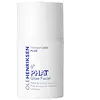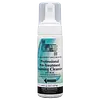What's inside
What's inside
 Key Ingredients
Key Ingredients

 Benefits
Benefits

 Concerns
Concerns

 Ingredients Side-by-side
Ingredients Side-by-side

Water
Skin ConditioningGlycerin
HumectantKaolin
AbrasiveGluconolactone
Skin ConditioningGluconic Acid
Polyglyceryl-10 Stearate
Skin ConditioningPropanediol
SolventBentonite
AbsorbentCetearyl Alcohol
EmollientSalvia Hispanica Seed Oil
MoisturisingBetula Alba Juice
AstringentGlyceryl Stearate
EmollientPolyacrylate-13
Sodium Hydroxide
BufferingParfum
MaskingPullulan
Polyisobutene
Phenoxyethanol
PreservativeCaprylyl Glycol
EmollientXanthan Gum
EmulsifyingPotassium Sorbate
PreservativePolysorbate 20
EmulsifyingHexylene Glycol
EmulsifyingSorbitan Isostearate
EmulsifyingTocopherol
AntioxidantBiotin
AntiseborrhoeicHyaluronic Acid
HumectantNiacinamide
SmoothingPanthenol
Skin ConditioningChamomilla Recutita Flower Extract
MaskingCitrus Limon Fruit Extract
MaskingGlycyrrhiza Glabra Root Extract
BleachingSaccharum Officinarum Extract
MoisturisingSantalum Album Extract
CleansingEriophorum Spissum Flower/Stem Extract
Skin ConditioningChlorphenesin
AntimicrobialLeuconostoc/Radish Root Ferment Filtrate
AntimicrobialSorbic Acid
PreservativeIron Oxides
Citral
PerfumingLimonene
PerfumingLinalool
PerfumingWater, Glycerin, Kaolin, Gluconolactone, Gluconic Acid, Polyglyceryl-10 Stearate, Propanediol, Bentonite, Cetearyl Alcohol, Salvia Hispanica Seed Oil, Betula Alba Juice, Glyceryl Stearate, Polyacrylate-13, Sodium Hydroxide, Parfum, Pullulan, Polyisobutene, Phenoxyethanol, Caprylyl Glycol, Xanthan Gum, Potassium Sorbate, Polysorbate 20, Hexylene Glycol, Sorbitan Isostearate, Tocopherol, Biotin, Hyaluronic Acid, Niacinamide, Panthenol, Chamomilla Recutita Flower Extract, Citrus Limon Fruit Extract, Glycyrrhiza Glabra Root Extract, Saccharum Officinarum Extract, Santalum Album Extract, Eriophorum Spissum Flower/Stem Extract, Chlorphenesin, Leuconostoc/Radish Root Ferment Filtrate, Sorbic Acid, Iron Oxides, Citral, Limonene, Linalool
Water
Skin ConditioningAloe Barbadensis Sprout
HumectantBoswellia Serrata Extract
Skin ConditioningArnica Montana Flower Extract
MaskingSodium C16 Olefin Sulfonate
EmulsifyingCocamidopropyl Betaine
CleansingGlycerin
HumectantLavandula Angustifolia Oil
MaskingCitrus Aurantium Dulcis Oil
MaskingCitrus Nobilis Oil
MaskingTorreya Grandis Fruit Oil
Skin ConditioningCitrus Aurantium Bergamia Fruit Oil
MaskingCaprylic Acid
CleansingGlycine
BufferingOlea Europaea Leaf Extract
PerfumingManganese Gluconate
Skin ConditioningPotassium Sorbate
PreservativeTocopherol
AntioxidantSodium Chloride
MaskingWater, Aloe Barbadensis Sprout, Boswellia Serrata Extract, Arnica Montana Flower Extract, Sodium C16 Olefin Sulfonate, Cocamidopropyl Betaine, Glycerin, Lavandula Angustifolia Oil, Citrus Aurantium Dulcis Oil, Citrus Nobilis Oil, Torreya Grandis Fruit Oil, Citrus Aurantium Bergamia Fruit Oil, Caprylic Acid, Glycine, Olea Europaea Leaf Extract, Manganese Gluconate, Potassium Sorbate, Tocopherol, Sodium Chloride
 Reviews
Reviews

Alternatives
Ingredients Explained
These ingredients are found in both products.
Ingredients higher up in an ingredient list are typically present in a larger amount.
Glycerin is already naturally found in your skin. It helps moisturize and protect your skin.
A study from 2016 found glycerin to be more effective as a humectant than AHAs and hyaluronic acid.
As a humectant, it helps the skin stay hydrated by pulling moisture to your skin. The low molecular weight of glycerin allows it to pull moisture into the deeper layers of your skin.
Hydrated skin improves your skin barrier; Your skin barrier helps protect against irritants and bacteria.
Glycerin has also been found to have antimicrobial and antiviral properties. Due to these properties, glycerin is often used in wound and burn treatments.
In cosmetics, glycerin is usually derived from plants such as soybean or palm. However, it can also be sourced from animals, such as tallow or animal fat.
This ingredient is organic, colorless, odorless, and non-toxic.
Glycerin is the name for this ingredient in American English. British English uses Glycerol/Glycerine.
Learn more about GlycerinPotassium Sorbate is a preservative used to prevent yeast and mold in products. It is commonly found in both cosmetic and food products.
This ingredient comes from potassium salt derived from sorbic acid. Sorbic acid is a natural antibiotic and effective against fungus.
Both potassium sorbate and sorbic acid can be found in baked goods, cheeses, dried meats, dried fruit, ice cream, pickles, wine, yogurt, and more.
You'll often find this ingredient used with other preservatives.
Learn more about Potassium SorbateTocopherol (also known as Vitamin E) is a common antioxidant used to help protect the skin from free-radicals and strengthen the skin barrier. It's also fat soluble - this means our skin is great at absorbing it.
Vitamin E also helps keep your natural skin lipids healthy. Your lipid skin barrier naturally consists of lipids, ceramides, and fatty acids. Vitamin E offers extra protection for your skin’s lipid barrier, keeping your skin healthy and nourished.
Another benefit is a bit of UV protection. Vitamin E helps reduce the damage caused by UVB rays. (It should not replace your sunscreen). Combining it with Vitamin C can decrease sunburned cells and hyperpigmentation after UV exposure.
You might have noticed Vitamin E + C often paired together. This is because it is great at stabilizing Vitamin C. Using the two together helps increase the effectiveness of both ingredients.
There are often claims that Vitamin E can reduce/prevent scarring, but these claims haven't been confirmed by scientific research.
Learn more about TocopherolWater. It's the most common cosmetic ingredient of all. You'll usually see it at the top of ingredient lists, meaning that it makes up the largest part of the product.
So why is it so popular? Water most often acts as a solvent - this means that it helps dissolve other ingredients into the formulation.
You'll also recognize water as that liquid we all need to stay alive. If you see this, drink a glass of water. Stay hydrated!
Learn more about Water